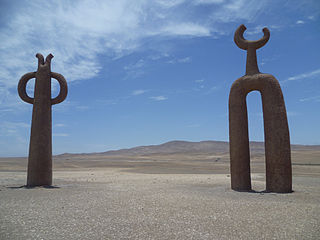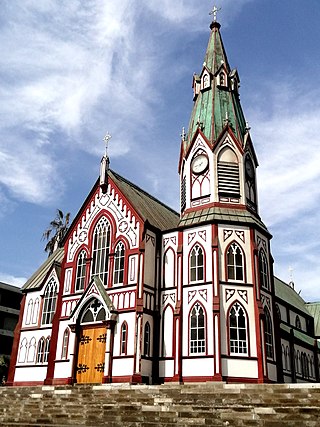8 Sights in Arica, Chile (with Map and Images)
Legend
Premium Sights
Book tickets, guided tours and activities in Arica.
Guided Free Walking Tours
Book free guided walking tours in Arica.
Welcome to your journey through the most beautiful sights in Arica, Chile! Whether you want to discover the city's historical treasures or experience its modern highlights, you'll find everything your heart desires here. Be inspired by our selection and plan your unforgettable adventure in Arica. Dive into the diversity of this fascinating city and discover everything it has to offer.
1. Gabriela Mistral
Lucila Godoy Alcayaga, known by her pseudonym Gabriela Mistral, was a Chilean poet-diplomat, educator, and Catholic. She was a member of the Secular Franciscan Order or Third Franciscan order. She was the first Latin American author to receive a Nobel Prize in Literature in 1945, "for her lyric poetry which, inspired by powerful emotions, has made her name a symbol of the idealistic aspirations of the entire Latin American world". Some central themes in her poems are nature, betrayal, love, a mother's love, sorrow and recovery, travel, and Latin American identity as formed from a mixture of Native American and European influences. Her image is featured on the 5,000 Chilean peso banknote.
2. Sitio Patrimonio de la Humanidad Asentamiento y momificación artificial de la cultura chinchorro
The Chinchorro culture of South America was a preceramic culture that lasted from 9,100 to 3,500 years BP. The people forming the Chinchorro culture were sedentary fishermen inhabiting the Pacific coastal region of current northern Chile and southern Peru. Presence of fresh water in the arid region on the coast facilitated human settlement in this area. The Chinchorro were famous for their detailed mummification and funerary practices. The area of the Chinchorro culture started to receive influences from the Andean Plateau around 4,000 BP, which led to the adoption of agriculture. Much later, it came under the influence of the Tiwanaku Empire.
3. Museo Arqueológico San Miguel de Azapa
The San Miguel de Azapa Archaeological Museum is a museum located 500 meters from the town of the same name, in the commune of Arica, which is part of the region of Arica and Parinacota, in northern Chile. Founded in 1967, it belongs to the University of Tarapacá and stands out for housing the mummies of the Chinchorro culture, the oldest in the world.
Wikipedia: Museo Arqueológico San Miguel de Azapa (ES), Website
4. Faro Molo de Abrigo de Arica
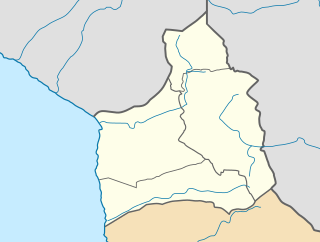
The Molo de Abrigo Arica Lighthouse or Molo de Abrigo Extreme Lighthouse is a lighthouse belonging to the lighthouse network of Chile. It is full red in color and has a cylindrical shape. It is uninhabited.
5. Faro Concordia
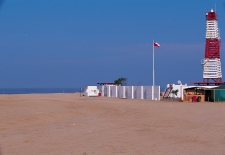
The Concordia Lighthouse or Concordia Lighthouse is a lighthouse belonging to the lighthouse network of Chile and is located in the extreme north of Chile in the Region of Arica and Parinacota. Its structure is metal pyramidal covered by bands grouped in white, red and white. It entered service in 1972. Inhabited lighthouse.
6. Presencias Tutelares
Tutelary Presences is a sculptural ensemble of reinforced concrete and clay located in the pampa of Acha, at the intersection of the North Pan-American Highway with Route A-31, 27 kilometers south of the city of Arica, Chile. The work of the artist Juan Díaz Fleming, it was financed by the National Fondart of the National Council of Culture and the Arts in 1996, and inaugurated in 1997.
7. Casa Yanulaque
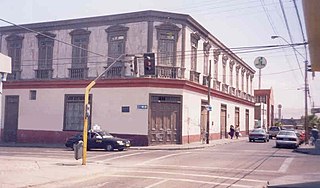
The Casa Yanulaque is a historical building located in the Chilean city of Arica, in the corner of 18 de Septiembre and General Lagos streets. It is owned by the Peruvian State as part of the 1929 Treaty of Lima, and currently houses its consulate-general.
8. Catedral San Marcos
The Cathedral of San Marcos is the main church of Arica, located in the center of that city in northern Chile, at 170 Bolognesi Street, in front of Plaza Colón, between San Marcos and 7 de Junio streets.
Share
How likely are you to recommend us?
Disclaimer Please be aware of your surroundings and do not enter private property. We are not liable for any damages that occur during the tours.



